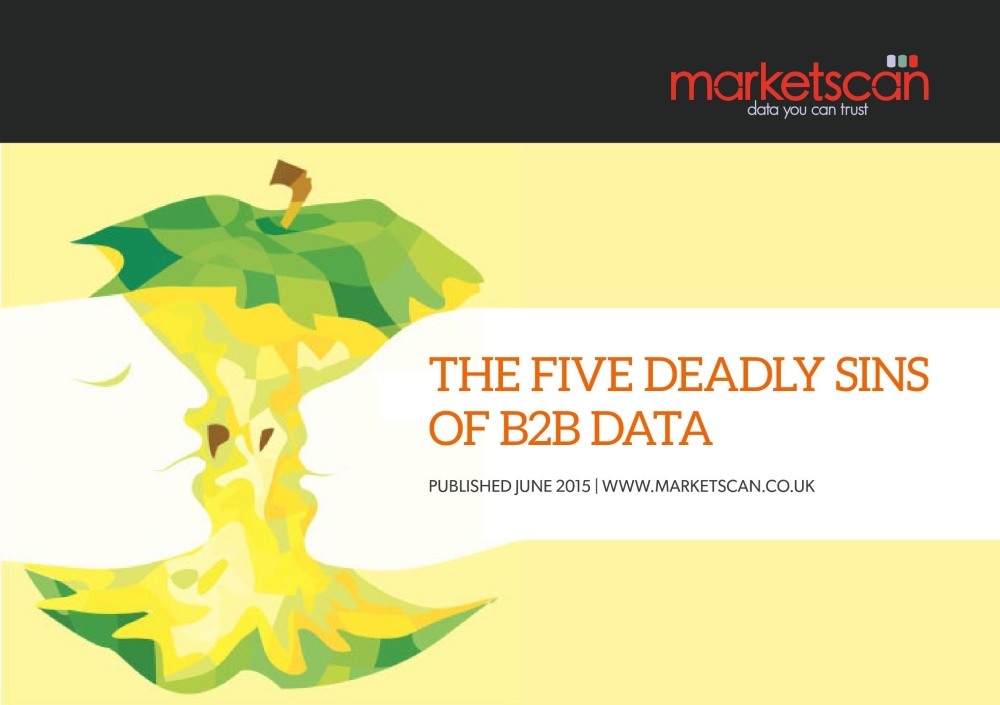The 5 Deadly Sins of B2B Data
29 Jul 2015

All too often, businesses are approaching data with confused, haphazard strategies and unreasonable expectations as to what data can accomplish. As a result, the immense potential and value of databases is being squandered.
Here, we list the ‘five deadly sins of B2B data’. Avoid them and you’ll be on your way to data heaven.
1. Running before you can walk
Data is a perennial challenge in marketing and, with all the hype surrounding the rush towards being data-centric, it’s easy for companies to get carried away. Instead of taking tentative first steps to make sure they’re on a firm footing and heading in the right direction, businesses are going hell-for-leather, investing in expensive technology without first considering how extra insight and computer power will best serve the needs of the business.
Collecting and analysing massive amounts of data is not an end in itself: it has no benefit at all unless it’s strictly in line with wider business objectives. Companies should start small and make sure their IT professionals build a data infrastructure that is designed with business outcomes in mind and aligned to achieving them.
2. Locking data in silos
In order for new or existing data initiatives to work to their best advantage, all the data a business collects about customers’ needs to be able to move smoothly between all the departments of an organisation.
Unfortunately, many companies mistakenly compartmentalise data, breaking it up between departments and keeping it locked away in data silos – the sales data silo, the marketing data silo, the customer service data silo and so on. As a result, businesses are unable to gain the kinds of useful insights that only emerge when all data is shared in a single location where it can be freely accessed by all departments.
3. Too many cooks spoiling the broth
All too often, businesses do not have a clear idea of who is responsible for managing data and keeping it clean and functional. In organisations where silos exist, there may be one or two people per department responsible for managing the data that they need. Unless someone oversees all of these changes, chaos will ensue: duplicated details, important leads going missing, and bad or old leads clogging up the system wasting time and money.
4. Failing to address skills gaps
Sixty per cent of B2B marketers feel there is a data skills gap in their company, both in terms of management and analytics.* Unless companies address this and get people with the right technical skills in terms of programming, analytics and statistics, they will inevitably be going in the wrong direction.
On the other hand, a balance has to be struck between technical skills and focus on solving a business problem. In order to succeed, a data initiative must involve those who have an understanding of what the business is all about: even if they don’t know the precise technical processes, the business experts will know best what they want their data to provide. When data specialists work together with the c-suite, marketing, sales and so on, the right questions will be asked of the data, thus ensuring it delivers real business value.
*Are you unlocking the power of your data? Marketscan 2015 in conjunction with B2B Marketing
5. Not acting on insights
The real purpose of data analytics for businesses is to unearth insights that are able to inform decision-making and result in actions and changes that boost the bottom line and create competitive advantage. Businesses can collect all manner of data, but if they fail to act on it, this will doom even the best data initiative.
Not acting on data insights could largely be down to two related reasons. First, businesses will ignore data if they don’t trust its accuracy. Avoiding the first four sins of B2B data should help insights become more usable and, thus, more actionable. Second, data insights may not fit preconceived strategies. This requires more of a step-change in thinking: businesses need to think ‘data-first’, making decisions on what their data tells them, not using data when it confirms their opinions and ignoring it when it doesn’t.
This article first appeared on the Marketscan website

Please login to comment.
Comments